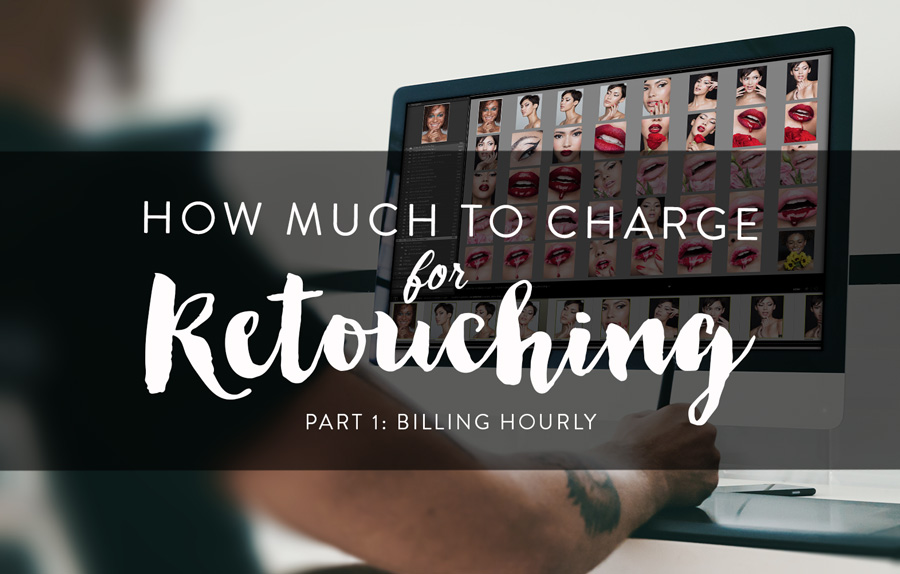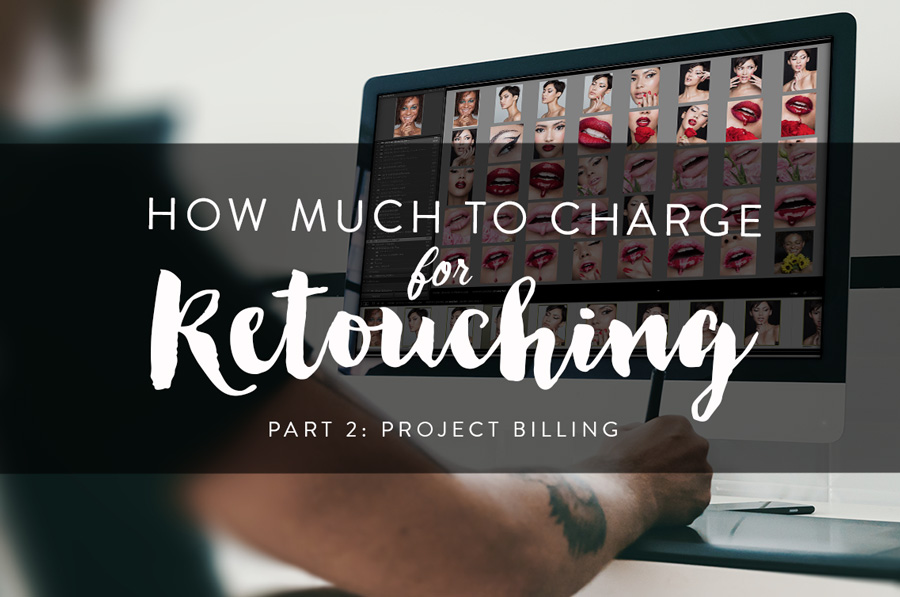One of more frequent questions we’re asked at Retouching Academy is ‘how much should I be charging for retouching?’ Tutorials, articles, and advice on how to improve your retouching output are widely available, but the issue of pricing can often seem a secretive one.
Much of this is because whilst it’s one thing to help a beginner improve their knowledge of say, color theory, it’s quite another to discuss one’s own income – it’s a personal thing very few professionals like to discuss. This, of course, doesn’t help anyone to build the business side of their early career, so I’m going to shed some light on billing practices in the hope that it provides a starting point for any of our readers trying to find their place in the market.
If you’re making the leap from one income source to that of a completely self-sufficient retouching professional, you need to figure out the value of your skills as an asset, and whether or not those skills are ready to command an income that will sustain a happy life. After all, that’s what we as freelancers surely strive for, the freedom not to be chained to a single place of work, a balance that allows our lives some flexibility.
Your career has an optimal position in the market, like a habitable zone around a star where several factors cooperate to make life on a planet possible. When your marketing brings evidence of your high skill to enough clients who need that skill, and your annual turnover allows for a comfortable life with the right work/life balance for you, you’re in the right place as a freelancer. Getting there, apart from developing the skill and marketing side, means having a good pricing model.
With the wide availability of the Internet, the market has become saturated at the low-skilled end and this has driven down prices thereabouts – if you want to be a valued professional in the commercial market don’t ever be tempted to match those prices.
I’ve spoken to people amazed that when they asked if $10 USD was too much to charge I explained that it was at least a $200 job. There’s an abundance of well-paid work for freelance professionals available with companies who don’t want to try twenty different $10 retouchers, they want one pro to do a pro job. And if you impress, those companies will keep your phone number handy.
There is disagreement even amongst time-served professionals about the best way to bill for a project; hourly or flat fee? Both have positives and downsides, so be flexible. In Part One of this article, we’ll take a look at some of the benefits and the downsides of billing by the hour.
Billing Hourly
The Positive
Knowing your hourly rate is a must for on-site work, and a good way to calculate your fee for remote work. For on-site work you’ll be demonstrating your value to the company whilst working at the agency itself and earning by the hour as you work.
As your hourly rate is understood to cover not only the associated costs of freelancing but also your downtime, freelancers are commonly paid hourly rates well in excess of those of contracted employees. Agencies understand this, and at certain times of the year when an outside service provider is needed, contractor fees are accounted for in the budget.
In the case of remote work, when presented with a brief and an example of the selects, you can explain to the inquiring party that you base your rates on a fee of a fixed rate per hour and that you can confidently quote a fee based on that calculation. This allows for agreed additional hours to be billed for any edits not listed in the original discussion of the brief.
Depending on your skill level and demand for your services, anywhere between $50 and $150 USD per hour is a perfectly reasonable ask, from fairly low to fairly high; that part is entirely up to you. Fees can be outside of this bracket (I’ve certainly seen lower and opportunities exist to charge more), depending largely on your location and demand, but consider how much you want to be working to earn the living you want.
Whilst it is possible to make as high a turnover as someone billing a decent hourly rate, a freelancer invoicing for a few thousand dollars here and there is enjoying a much better work/life balance and arguably more creative fulfillment.
The Negative
In the real world, a client honestly doesn’t care how many hours you’re likely to invest into the job, they’re interested in factoring your cost into their budget and making a value judgment. If you bill hourly be sure to be confidently familiar with your own ability, and your speed of working.
An open-ended estimate can be a leap of faith for a client – it’s a daunting prospect to imagine a service provider, particularly one whose work you’re unfamiliar with, hitting the clock and racking up a bill without any oversight. For this reason, it’s vital to make sure your client has a good idea of the numbers you’re likely to invoice.
If you’ve mistaken the extent of a project and the number of hours involved, be prepared to swallow those hours. If you’ve seen the selects, read the brief and given a quote based on your hourly rate, then later come to realize that the project will run over, the fault lies with your own estimate and absolutely not with the client.
It happens, and there’s no fool-proof way to judge a projected investment of time, but experience will get you close.
A client who is told that there’ll be a bill for time they were not told to expect may feel their product is being held to ransom, so try to close out on budget even when your hours have just tipped over.
In the case of additional and extensive edits not outlined in the brief or if a client’s revisions start to go considerably over budget, you can always discuss further hours.
In Part Two of ‘How Much to Charge For Retouching: Project Billing’ we’ll take a look at the pros and cons of a flat project fee based pricing model, and how it can be an effective counter to some of the problems we’ve covered with hourly billing. We’ll also look at the opportunities in your career to increase your rates.















Great article!
I want to have it as side project, I can stop using filters and taking photos of my boyfriend’s face and my face. Are there any free courses, or can I do it alone, I studied photography at high school.
Hi Katia, you can do it alone, sure!
We don’t have any free courses, except for the one that comes along with the MUA Retouch panel (https://retouchingacademylab.com/mua-retouch-panel/), but we have a lot of free articles here: https://retouchingacademy.com/open-learning-modules/ and our premium courses are here: https://retouchingacademy.com/shop/
Hope this helps!